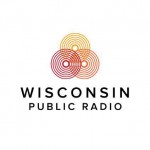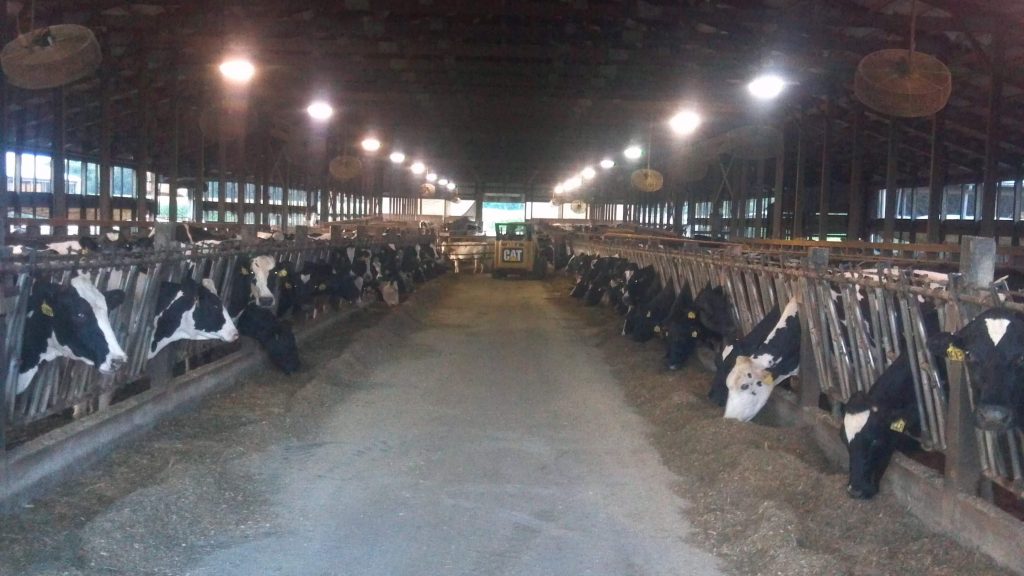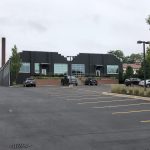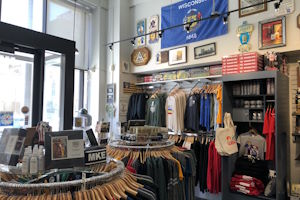New Study Identifies CAFO Farms as Air Pollution Source
Large farms with large animals could be doing more than harming water quality.
When an eastern wind blows through Larry Brenner’s home in Pierce County, he knows two things are likely.
“One, as the old farmers will tell us, it’s going to rain. And two, when I wake up in the morning and head outside, the smell is not very good,” Brenner told WPR’s “Wisconsin Today.”
The bad smell emanates from a dairy farm about a mile east of Brenner’s home, where he runs the outdoor restaurant Vino in the Valley. The nearby farm, Ridge Breeze Dairy, has 1,700 cows, but it is planning on expanding next year to 6,500 cows.
Brenner worries what that expansion could mean, not just for the smells that might blow his way, but also for the potential for his well water to be contaminated. He’s among a group of neighbors who have petitioned the state Department of Natural Resources to reconsider its approval of the farm expansion.
The planned expansion in Pierce County would generate almost 80 million gallons of manure and wastewater, and Brenner said there’s a big concern about how that will impact water quality.
“We’re in the valley right below Ridge Breeze, and we all know which way manure flows.
“Water is everything for us, and if we lose that, that’s going to have a big effect on our business because we use water in our cooking,” Brenner said. “It’s in our ice for our drinks. And you know, we serve about, give or take 2,000 people every four-day weekend from May until the end of October. And we’re very scared.”
And, a new study from the University of Michigan uncovered a problem Brenner might have to worry about — air pollution.
Air pollution and lack of insurance coverage linked to animal farms
Impacts from animal feeding operations — which include Concentrated Animal Feeding Operations, or CAFOs — are getting more attention as they become more prevalent. Some of the big concerns about CAFOs are the potential to pollute water, degrade soil quality and cause animal suffering.
Benjamin Goldstein, an assistant professor of environment and sustainability and head of the Lab for Sustainable Urban-Rural Futures at the University of Michigan, was one of the scientists behind the new study. He explained what its findings can and can’t illuminate about large animal feeding operations.
The study identified about 15,000 cow and pig animal farms around the U.S. It included CAFOs, as well as more traditional farms where animals have more room to roam. After identifying the counties where these farms are concentrated, the researchers also looked at their air pollution and health insurance coverage levels.
Counties that had a lot of large animal feeding operations had higher particulate matter pollution compared to counties that are in the same climate but do not have these operations. This is the same pollution that is created by wildfires, power plants, factories, cars and other sources of combustion.
“We know that with large animal feeding operations there are a lot of hooves disturbing the vegetation and often trampling it down. And so you end up with a lot of bare ground, dirt and dust that gets kicked up into the air, and this air then has small particulate matter that lingers in the air for hours at a time and travels significant distances,” Goldstein said. “And it can actually penetrate deep into our lungs when we breathe it in. And if we do enough of this, it can generate scar tissue within our lungs. And so this can turn into long-lasting health impacts for those who breathe it in.”
More study needed
Wisconsin has 293 permitted CAFOs, with 134 located in the northeast part of the state, according to the Wisconsin Department of Natural Resources. The state defines CAFOs as operations with 1,000 or more animals. Smaller operations can also be designated as a CAFO if they are polluting a stream or well.
Goldstein cautioned that more study is needed to know for sure how animal farms are contributing to the pollution.
“It’s really tricky because we have all these confounding variables,” he said. “And so we can’t say with 100 percent certainty that these (feeding operations) are the sole reason that we have these higher particulate matter concentrations in the ambient air. But there are more sophisticated types of analyses that other people can do, hopefully taking our data set and really controlling for all those variables.”
The researchers also found that many of the counties that have animal feeding operations also have lower levels of health insurance coverage. But in this regard, Wisconsin is an outlier in the data.
“On a positive note, in Wisconsin, even though there are significant numbers of CAFOs … there’s also high levels of insurance coverage for people that are in Wisconsin that are living near those (farms),” Goldstein said. “We found that in New Mexico, Texas and Kansas, there are high concentrations of these animal feeding operations alongside high concentrations of people that do not have health insurance, and so this is very problematic if you’re getting sick from being near industrial facilities, but don’t have insurance to cover you.”
“But I would also argue that it’s better to not get sick in the first place, even if you do have insurance,” he added.
University of Michigan study finds large animal farms might be a significant source of air pollution was originally published by Wisconsin Public Radio.
If you think stories like this are important, become a member of Urban Milwaukee and help support real, independent journalism. Plus you get some cool added benefits.























Even though we knew this was an issue as kids growing up in the 60’s and 70’s, I guess it was seldom talked about. For anyone that ever drove past a Wisconsin sheep farm in the middle of summer, you know it to be true.
I remember when Mayor Henry Maier complained about regular farms to the north of Milwaukee affecting the water quality going into the Milwaukee River…and Lake Michigan. He was laughed at back then. But partially because of those concerns, I believe that a lot of river front property is now protected through conservation easements. With these corporate farms.. massive in size…taking over the farmland, I can only imagine how bad it would be to live downwind of them,